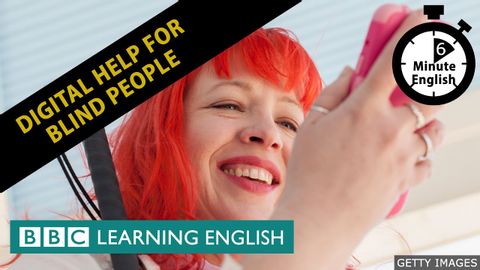數字化助盲--6分鐘英語。 (Digital help for blind people - 6 Minute English)
 沒有此條件下的單字
沒有此條件下的單字US /pɚˈsɛpʃən/
・
UK /pəˈsepʃn/
- n. (c./u.)知覺;感知;知覺;理解;看法;觀點;信念;洞察力
- n.簡述重點;翻新胎面;重述要點;翻新的輪胎
- v.t.概括
US /tɛkˈnik/
・
UK /tekˈni:k/
- n. (c./u.)技術;工藝;技能;(藝術)技巧
US /voˈkæbjəˌlɛri/
・
UK /və'kæbjələrɪ/
